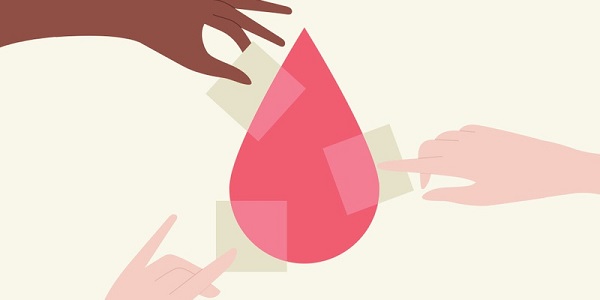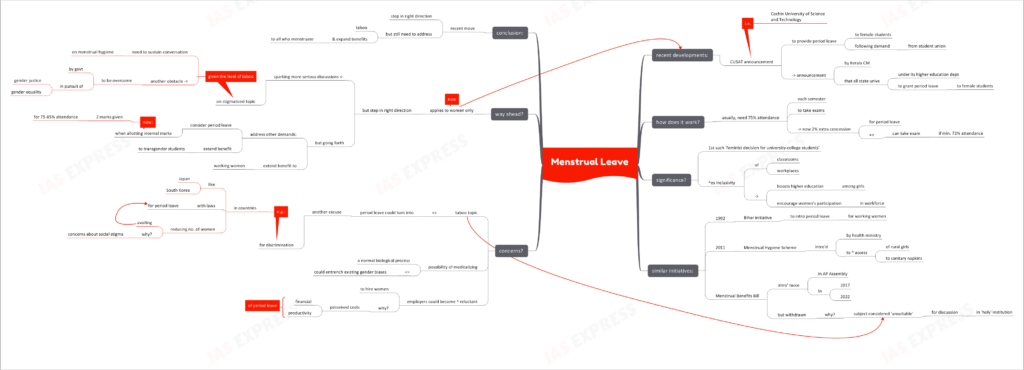Menstrual Leave- Initiatives, Significance & Concerns

From Current Affairs Notes for UPSC » Editorials & In-depths » This topic
IAS EXPRESS Vs UPSC Prelims 2024: 85+ questions reflected
Following CUSAT’s announcement, the Kerala government too has announced plans to provide period leave for female students.

Recent developments:
- Recently, the Kerala CM announced that the state government would be granting menstrual leave for female students of all state universities under its higher education department.
- This announcement comes after CUSAT’s (Cochin University of Science and Technology) decision to provide such leave for its female students, following representation from students’ union.
How does menstrual leave work?
- Usually, students require minimum 75% attendance to take the examinations each semester. Now the state will be granting a 2% extra concession for female students.
- This means that female students can take their exams if they have 73% attendance.
Why is this move significant?
- This move is being touted as the 1st such ‘feminist decision for university-college students’ in the country.
- Bringing in period leave would make classrooms and workplaces more inclusive and accommodating.
- This would further boost higher education among girls and encourage women’s participation in the workforce.
Have there been other similar measures?
- In 1992, the Bihar government introduced period leave for working women.
- In 2011, the Menstrual Hygiene Scheme, introduced by the health ministry, sought to improve rural girls’ access to sanitary napkins.
- In 2017, the Arunachal Pradesh Assembly introduced the Menstruation Benefits Bill. It was again tabled in 2022. However, the Bill was withdrawn because the subject was considered ‘unsuitable’ for discussion in the ‘holy’ institution.
What are the concerns?
- While this is a welcome move, there is a concern about the how menstruation is a taboo topic in India. In this context, the period leave could simply morph into an excuse for discrimination.
- For instance, in countries like Japan and South Korea, there are laws providing for period leave. However, surveys show that fewer and fewer women are availing it, citing concerns about social stigma.
- Another concern is the possibility of medicalizing a normal biological process. This too could entrench existing gender biases.
- Employers could become more reluctant to hire women, citing concerns about perceived financial and productivity cost of period leave.
What is the way ahead?
- While this menstrual leave applies only to women, and not to other menstruating individuals, it is at least a step in the right direction. It has sparked a more serious discussion on a stigmatized topic.
- Given the current level of stigma surrounding the topic, it is vital to sustain conversation around menstrual hygiene. It is one of the many obstacle that the government needs to negotiate in its pursuit of gender justice and equality.
- Going forth, the students in Kerala are now demanding that the period leave be kept in mind while allotting internal marks. Classroom participation earns a student 2 marks while aggregating internal marks. This is given to students having 75-85% attendance.
- The government would also do well to extend the benefit to transgender students.
- Extending the period leave benefits to working women would be another important step in addressing the need of so many.
Conclusion:
The recent move in Kerala is a step in the right direction, in pursuit of gender justice and equality. However, there is still the challenge of taboo that needs addressing. Expanding the benefits to all those who menstruate would be a more beneficial move.
Practice Question for Mains:
Comment on the significance of Kerala government’s move to introduce period leave in its higher education institutions. What are the challenges and way ahead? (250 words)
If you like this post, please share your feedback in the comments section below so that we will upload more posts like this.

